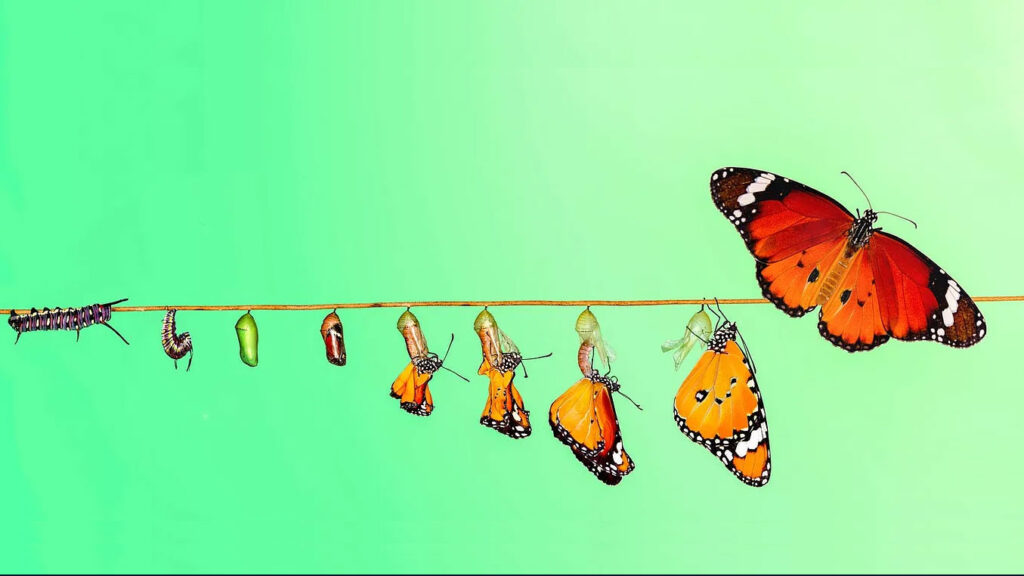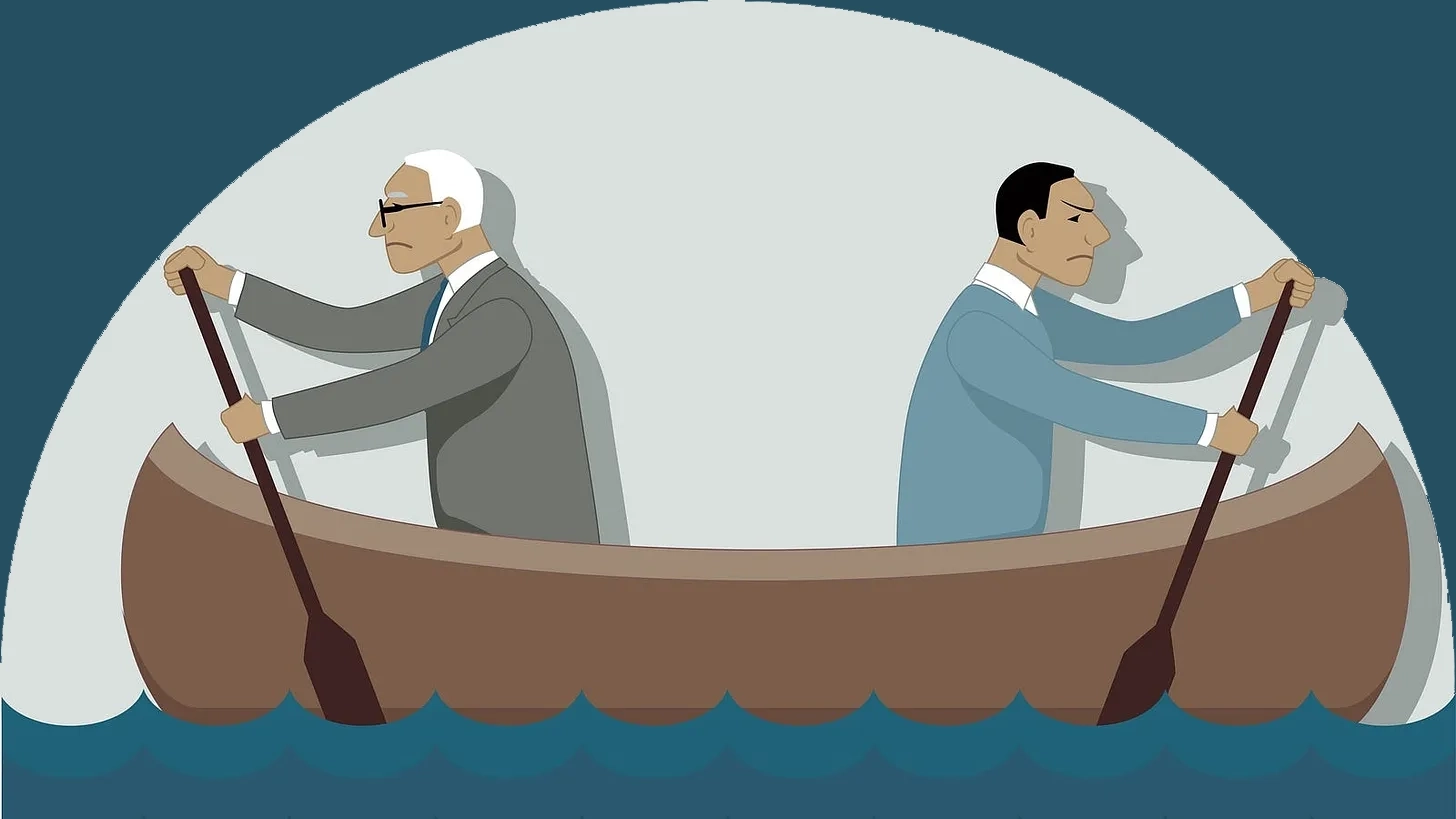Personal Growth Strategies: Stages of Change
The Stages of Change model is a roadmap of what to expect during your journey of personal growth.

Who doesn’t have a bucket list of nagging problems in their life that they wish they could change? These problems can be small and annoying — or large and debilitating.
Small problems might be wishes to improve the quality of your life with minor adjustments here or there. You exercise, but not enough. Maybe you’ve been told to cut back on your sugary desserts, but you love your after-dinner carbo-rush. Or maybe, like me, you’ve spent the last ten years promising to lose ten pounds.
Some personal problems are bigger than others. Your habits might be unhealthy, your behaviors may be driving a wedge between you and those close to you, or you can’t shut off that self-criticizing voice in your head.
Some problems rise to the level of making your daily life difficult and miserable.
Lifestyle issues, like tobacco, drugs, alcohol, a sedentary lifestyle, and weight management, can lead to associated problems like anxiety, depression, social withdrawal, and chronic anger. These associated problems can become preoccupations and chronic worries, making your life dysfunctional.
Problems that render your life dysfunctional can result in poor job performance, disruptive relationships, chronic stress, and lifestyle-related illnesses.
Personal growth strategies can help you change these problematic behaviors, improving the quality of your life and your relationships. However, the seriousness of your problems will determine your success.
The more manageable your problems, the more likely you are to benefit from finding a good life coach — or deciding upon a self-guided journey toward personal growth.
Persons whose lives are compromised by problems that render them dysfunctional should seek professional help for these problems. Self-help guides may provide temporary relief, but behavioral health professionals should treat problems related to persistent mental health and/or substance use disorders.
A Brief Introduction to Models for Personal Change
Behavioral health professionals use several models for personal change to help clients navigate the challenges of achieving personal goals. Many of these models can be adapted for a self-guided journey.
In this essay, I present the Stages of Change model developed by James Prochaska and Carlo DiClemente. Developed in the late 1970s and early 1980s, this model is based on numerous research projects. The inspiration for this model was James Prochaska’s experience growing up with an alcoholic father whom he was unable to help, even as a young professional. Consequently, this model has been used extensively in the treatment of substance use disorders.
As Prochaska and colleagues refined this model over time, it was expanded and renamed the Transtheoretical Model. It now includes ten evaluative processes to facilitate a traveler’s movement through the stages of change. But the Stages of Change are still at the core of the Transtheoretical Model.
Another value of this Stages of Change model is that it is a core component of Motivational Interviewing (MI), an evidence-based psychotherapy treatment. Although the treatment’s name is odd, its effectiveness is substantial. MI is especially helpful for clients who are challenged by an initial resistance to change. In other words, MI is helpful when your process of growth is stuck.
The Six Stages of Change
When medical patients are about to go through a difficult treatment, such as major surgery with a long recovery, healthcare researchers have determined that patients recover faster with less post-surgical trauma when they have been told what to expect in their recovery. It’s better to know what to expect than be surprised.
Similarly, the Stages of Change model tells you what to expect on your journey toward personal growth. The model doesn’t tell you what to change. You identify the problem, and the model helps you prepare for the journey.
Here are the stages of change for your journey that often begins with this assertion:
Who’s got a problem? I don’t have a problem! Maybe you have a problem!
If you see yourself as not having a problem, but others see you as having problems, then your path to personal growth will begin with Stage 1: Precontemplation.
1. Precontemplation: Vague Awareness or Denial of a Problem

Like the thoughtful caterpillar, you may not recognize your for change at this first stage. Others may tell you what you need to change, but you cannot hear it. You are happy being a caterpillar.
A key characteristic of this stage is denial, which includes resistance to recognizing or acknowledging your problem. This, in turn, leads to a lack of motivation for change.
Acknowledging this stage is crucial. It’s about you (or someone you care about) gently awakening to the idea that changing your perspective or lifestyle might be beneficial. The key in this stage is not to rush or force awareness but to open yourself to new perspectives and information.
If you are getting the same feedback from several people, take a risk and start allowing the messages to sink in. No one can make you change. It has to come from you.
Alternately, if you see a friend or loved one in trouble, know that you cannot force someone to change. They have to see it themselves.
2. Contemplation: Awakening to the Need for Change

Here, you begin to seriously consider making changes in your core self and your life. You begin to identify the boundaries of what needs to change.
You consider the pros and cons: Is this the right time? Can I do this? How badly do I want to change?
This stage is characterized by ambivalence — a tug-of-war between the status quo’s comfort (or familiar discomfort) and your desire for growth. To navigate this stage, you will need to arrive at a compelling argument that the effort will be worth the outcome — a new you.
As your comfort level allows, build a support network by getting feedback and encouragement from family, friends, or established support groups, like AA or NA. A support network is important for all phases of change.
Success at this stage is your emphatic decision to take the plunge. If you commit to change because someone asked or told you to do so, you will probably not be successful. The decision to change must be yours. However vague your intention, something in you says, “It’s time to move forward.”
3. Preparation: Getting Ready for Action

Preparing for your growth journey means coming up with an action plan. The more specific the plan, the better. I encourage you to sketch out this plan on paper (or, better yet, in a journal app where you can make ongoing notes on your progress).
Think about what you want to change in your core self or your life’s circumstances. Get as specific as you can. Keep the list short. Start with items that are most germane to the core problem you wish to change.
Your plan should begin with small steps. Change is incremental. Small successes will give you the confidence to add new items to the list.
Sometimes, you must take a big painful step (such as leaving a relationship) to move forward. Anticipate what comes next after the separation. Include those next steps for post-separation in your action plan.
Your plan is dynamic. It will change as you make progress. You shouldn’t revise your plan daily, but you might need revisions as you achieve goals or encounter bumps along the way. Think of your growth plan as a life preserver in a choppy sea.
Your planning strategies might involve researching a healthier diet, joining a support group, or setting specific goals. Gathering the information, resources, and support you will need is also important. Remember, effective planning is a crucial predictor of long-term success.
When making your plan, think sequentially. What comes first, second, and third? Anticipate self-imposed or external barriers. Include strategies to overcome those barriers in your plan.
Life is nonlinear. Bad things happen when you least expect them. As these “bumps” occur, adjust your growth plan to reflect recovery from the bump. Life is nonlinear, but a dynamic plan can be linear with the expectation of revisions.
4. Action: Jumping Into the Hard Work of Change

Your growth plan is your pathway for change. Take one step at a time, however small or large.
This stage is the hardest and will require a considerable commitment of time and effort. This is where you do the hard work of doing things differently or seeing the world through a new lens.
The longer you’ve had the problem you want to change, the longer the time and the greater effort it will take. The same can be said of problems that have been more disruptive. Change does not come easy, and long-standing problems resist change.
As you make progress, others may notice changes in you. Your support network can help you at this stage (indeed, at all stages). If they haven’t given you feedback, ask your family and friends about the changes they see in you. You will need positive feedback from others (as well as yourself) to reinforce your positive changes.
Help those in your support network feel comfortable giving you critical feedback if they see you slipping from your goals. Positive feedback always feels good, but critical feedback helps you stay on a bumpy pathway.
Most importantly, do not judge yourself harshly during this process of active change. You will not always progress as you would like. You will wonder why you got started and whether it is worth the trouble. Second-guessing is natural.
Relapse is the norm, not the exception. Do not judge yourself negatively when you hit bumps. Self-criticism only creates more bumps. Indulge in self-forgiveness and keep moving along the path.
5. Maintenance: Turning Your New Behaviors into Habits and Routines

Congratulations! You have followed your plan, achieved your goals, and are now engaged in the daily grind of sustaining your changes. You feel ready to fly!
As you begin to relax and bask in your hard-won success, relapse continues to be a risk while “the new you” is still new. Let me repeat: do not judge yourself harshly if and when you relapse. This is an expected and normal part of growth.
Your focus here should be on integrating the new behaviors into your life and developing routines to maintain these behaviors over the long term. Strategies like ongoing support, self-reflection, and adjusting your plan as needed can be incredibly beneficial. Many people find meditation helpful, and new hobbies can also keep your focus positive.
Remember, maintenance is not a static stage; it’s an ongoing process of growth and adaptation. Change is always dynamic.
And don’t forget: Continue to use your support network for positive (and supportively critical) feedback that will help you sustain your efforts.
6. Termination: Relax and Celebrate (Without Letting Your Guard Down)

Congratulations! You have arrived, although you may not believe it. Achieving a personal growth goal is not like standing in front of the Eifel Tower as a tourist destination. It takes time to believe that you are the new you.
Over time, the risk of relapse lessens, and your new behaviors or worldviews become part of your routine actions. While relapse is always possible, the final stage of change is taking pride in what you have accomplished by becoming the person you have wanted to become.
People with addiction disorders do not recognize this Stage of Termination but see themselves in a continuous Stage of Maintenance (recovery). This is probably a healthy perspective for all new behaviors and relationships. Because the problems of the past were habitual, it’s easy for unwanted habits to be resurrected, especially under times of stress.
Going Forward: Personal Growth Strategies: Stages of Change
The Stages of Change model is a non-linear road map that can guide you through personal growth related to a wide variety of personal and relationship problems. This map is non-linear in the sense that you will continuously recycle through these stages as you move toward the final stages of maintenance and termination.
Think of this model as a guide for going on vacation to a foreign country. No matter your destination, you need a plan to arrive at the sights you want to see.
The model doesn’t tell you what to change in your life. The problems you tackle are yours to target. However, once you take your first steps along the path of personal growth, the model tells you what to expect along the journey. This is why having a written growth plan is helpful.
I will leave you with one last thought I have repeated often: you cannot take a journey unless you decide to do so. And you cannot travel somewhere until you decide your destination.
This is the secret to achieving personal growth. The decision to change must be yours. You then need to be clear about what changes you wish to make.
Personal growth is a journey for you and you alone. You may have others on the sidelines of your life to cheer you on and give you feedback, but you alone take the many steps forward. Falling off the path will happen. I repeat: don’t judge yourself negatively when this happens. Find your way back to your growth plan and keep moving forward.
The path to personal growth is always uphill. It will always take effort. When you arrive, celebrate what you have accomplished. You worked hard to get there.
Reference
Prochaska, J. O., & Prochaska, J. M. (2016). Changing to Thrive: Using the Stages of Change Model to Overcome the Top Threats to Your Health and Happiness.

ABOUT THE AUTHOR
Wayne Stelk
A systems thinker and psychologist exploring the good, bad, and ugly of human nature. Editor of the newsletter, Unpuzzling Life's Complexities, the science of human behavior applied to everyday events.
SHARE THese UNPUZZLINGS
Unpuzzlings
THE LATEST UNPUZZLING
RELATED PUZZLES
Looking Beyond Astrology: A Better Way to Read People
Unpuzzling Astrology as a Match Maker and Futurist “What’s your sign?” It’s a question you’ve probably heard at parties, on…
Do Morals Need Religion? Ask Your Pre-Verbal Toddler
Around the world, our involvement with religion is changing. Participation in religious activities is declining in well-resourced countries where citizens feel relatively…
Your Personality: Who’s in Charge?
Unpuzzling the Nature and Nurture of Your Personality Your personality is the core of your self-identity. What do you know…
Why Does Hate Travel Faster Than Love?
It matters whether your worldview is convergent or divergent.
When Is Enough Enough to Change Your Mind?
In a skit, comedian Richard Pryor plays a husband whose wife comes home early to find him in bed with…
Three Pathways for Personal Growth: Which Is Best for You?
A friend of mine is obsessed with physical health and personal growth. He works out daily in a gym, reads…
Why Are Global Cancer Rates Rising for Young People Under Age 50?
Conspiracy theorists were in a tizzy when Princess Kate disappeared from public for several months. Now that she has confirmed…








